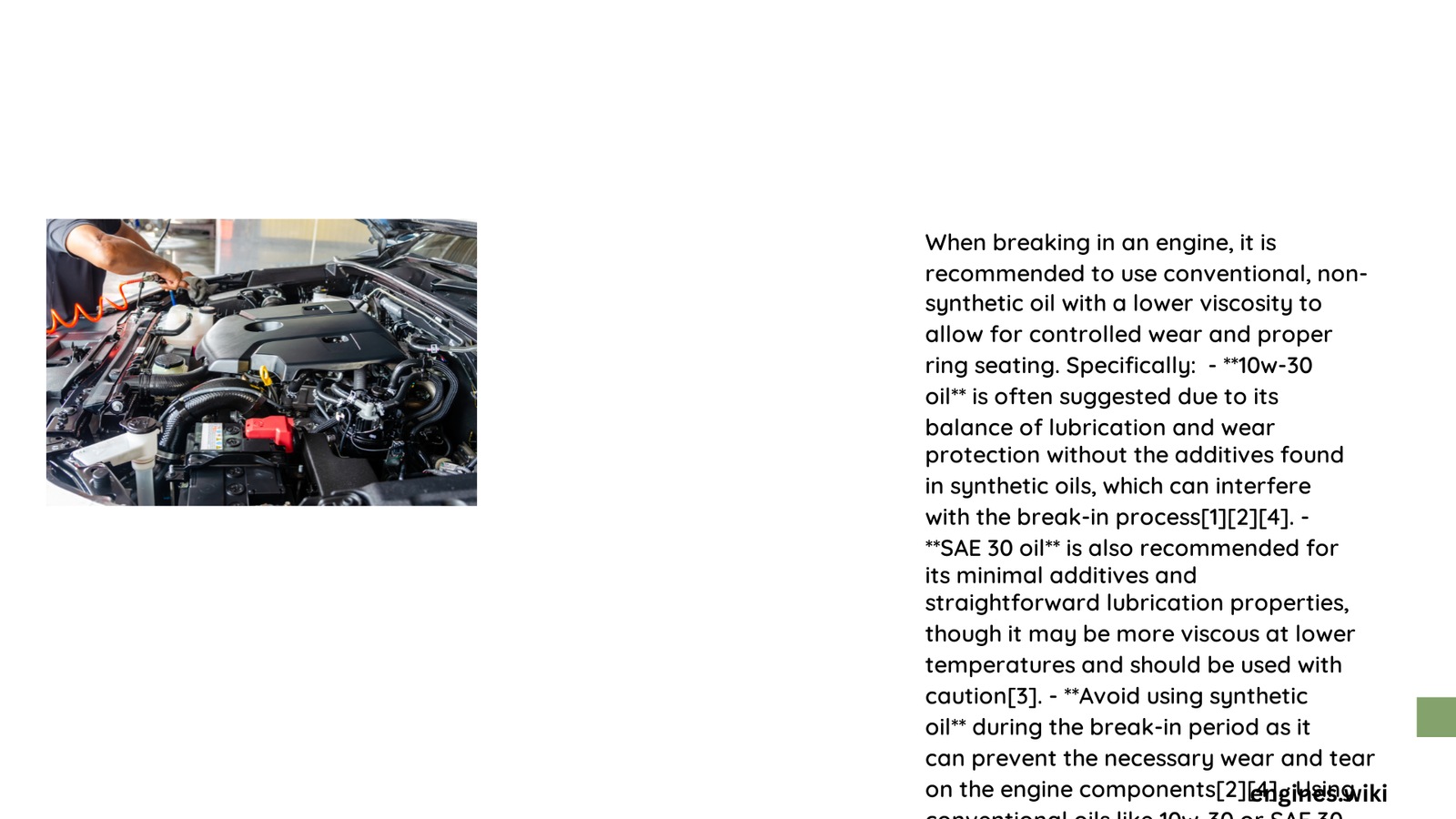When breaking in a new engine, selecting the right oil is crucial for long-term performance and durability. The ideal break-in oil must provide exceptional wear protection, facilitate proper piston ring sealing, and create a protective film on critical engine components. This comprehensive guide will walk you through the essential considerations for choosing the perfect break-in oil, ensuring your engine starts its life with the best possible protection.
What Makes Break-In Oil Different?
Break-in oils are specialized lubricants designed to address the unique challenges of a new engine’s initial operating period. Unlike standard motor oils, these formulations focus on:
- High Zinc (ZDDP) Content: Provides critical anti-wear protection
- Low Detergent Levels: Prevents interference with component seating
- Specific Viscosity Characteristics: Supports optimal engine component interaction
What Viscosity Should You Choose?
| Viscosity | Recommended Use | Key Characteristics |
|---|---|---|
| SAE 30 | Straight weight | Higher operating temperature viscosity |
| 10W-30 | Multi-viscosity | Better cold start performance |
| 10W-40 | Multi-viscosity | Enhanced protection in varied temperatures |
Why Is ZDDP Critical for Engine Break-In?

Zinc dialkyldithiophosphate (ZDDP) plays a pivotal role in protecting engine components during the break-in process. For flat tappet camshafts and other critical surfaces, ZDDP creates an essential anti-wear film that prevents premature component degradation.
Key ZDDP Considerations:
- Recommended ZDDP levels: 2800-3000 ppm
- Crucial for protecting metal-on-metal contact surfaces
- Particularly important in engines with flat tappet camshafts
How Long Should You Use Break-In Oil?
Most engine experts recommend using specialized break-in oil for:
1. First 400-500 miles of operation
2. Initial 30 minutes of engine runtime
3. Followed by a complete oil and filter change
Synthetic vs. Conventional Break-In Oils
Conventional Break-In Oils
- Higher ZDDP concentrations
- Lower detergent levels
- Traditional approach to engine break-in
Synthetic Break-In Oils
- Better temperature performance
- Must be specifically formulated for break-in
- Avoid oils with friction modifiers
Pro Tips for Successful Engine Break-In
🔧 Expert Recommendations:
– Vary engine loads and speeds during break-in
– Monitor oil pressure and temperature
– Change oil and filter after initial runtime
– Use manufacturer-recommended break-in procedures
Common Mistakes to Avoid
- Using standard motor oil during break-in
- Neglecting oil changes
- Avoiding varied engine loads
- Ignoring manufacturer-specific guidelines
Final Thoughts
Selecting the right break-in oil is an investment in your engine’s long-term performance and durability. By understanding the unique requirements of new engines and choosing a specialized break-in oil, you’ll set the foundation for years of reliable operation.
Recommended Break-In Oil Brands
- Driven Racing Oil GP-1 Break-In Oil
- Brad Penn Break-In Oil
- Valvoline Racing Oil
